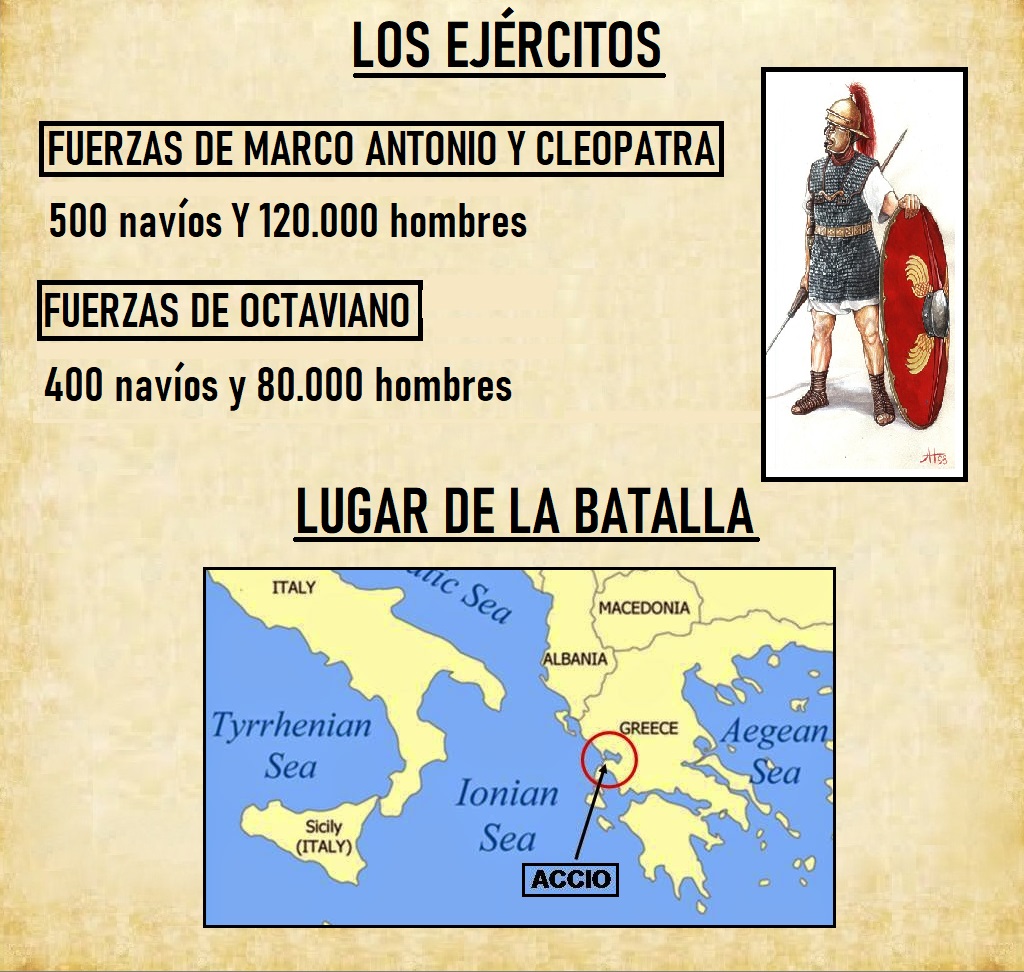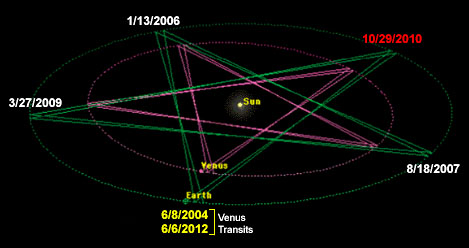|
|
General: NORMANDIA=DIA D-¿PORQUE LA CONEXION CON EL "EXPERIMENTO FILADELFIA"?
Escolher outro painel de mensagens |
|
|
Biden conmemorará aniversario del Día D en Francia mientras alianzas occidentales enfrentan amenazas
El presidente estadounidense Joe Biden llega a Francia para el 80 aniversario del Día D, donde se unirá a otros líderes mundiales para conmemorar la invasión que ayudó a poner fin a la Segunda Guerra Mundial.
PARÍS —
El presidente de Estados Unidos, Joe Biden, conmemorará esta semana el 80 aniversario de la invasión del Día D en Francia, mientras intenta demostrar un firme apoyo a la seguridad europea en un momento en el que algunos aliados temen que Donald Trump amenace con poner en entredicho los compromisos estadounidenses si gana otro mandato en la Casa Blanca.
El viaje se produce mientras continúan los combates más letales en el continente desde la Segunda Guerra Mundial en Ucrania y los países aliados luchan por encontrar formas de cambiar el rumbo contra Rusia, que recientemente ha ganado terreno en el campo de batalla. También se produce en medio de las grietas cada vez más profundas entre Estados Unidos y muchos aliados europeos sobre cómo gestionar la actual guerra entre Israel y Hamás en Gaza.
Biden llegó a París el miércoles por la mañana y fue recibido por funcionarios franceses y una guardia de honor. El jueves, visitará un terreno sagrado cerca de las playas de Normandía, donde hileras de lápidas blancas marcan las tumbas de los soldados estadounidenses que murieron para poner fin a la Segunda Guerra Mundial. Biden también hablará el viernes en Pointe du Hoc, un lugar de la costa francesa donde los Rangers del ejército escalaron acantilados costeros para superar las defensas nazis.
El asesor de Seguridad Nacional de la Casa Blanca, Jake Sullivan, dijo a bordo del Air Force One camino a Francia que Biden enfatizará cómo los hombres en esos acantilados "pusieron al país por delante de ellos mismos" y detallará "los peligros del aislacionismo y cómo, si apoyamos a los dictadores y no nos enfrentamos a ellos, seguirán adelante y, en última instancia, Estados Unidos y el mundo pagarán un precio mayor".
"Ochenta años después, vemos a los dictadores una vez más intentando desafiar el orden, intentando marchar en Europa", dijo Sullivan, "y que las naciones amantes de la libertad necesitan unirse para oponerse a eso, como lo hemos hecho nosotros".
También dijo que Biden se reunirá con el presidente ucraniano Volodymyr Zelenskyy en Francia para discutir "cómo podemos continuar y profundizar nuestro apoyo a Ucrania".
El sábado, Biden y su esposa Jill serán honrados por el presidente francés Emmanuel Macron con una visita de Estado que incluirá un desfile militar en París y un banquete en el Palacio del Elíseo, así como sesiones de negocios en las que los líderes discutirán el fortalecimiento de su alianza, comercio y cooperación en materia de seguridad para los próximos Juegos Olímpicos.
También se espera que los dos líderes discutan sobre Medio Oriente. Biden ha invertido capital geopolítico en negociar un alto el fuego en la guerra entre Israel y Hamás que permitiría la liberación de rehenes, aunque ha mantenido su firme apoyo a Israel y se ha resistido a los esfuerzos europeos de reconocer un estado palestino o investigar a Israel por su manejo de la guerra.
https://www.vozdeamerica.com/a/biden-conmemorara-80-aniversario-dia-d-francia-alianzas-occidentales-enfrentan-amenazas-/7643479.html |
|
|
|
|
2024-06-06 23:11 Last Updated At:23:21
COLLEVILLE-SUR-MER, France (AP) — President Joe Biden marked the 80th anniversary of D-Day on Thursday by pledging “we will not walk away” from the defense of Ukraine and allow Russia to threaten more of Europe.
“To surrender to bullies, to bow down to dictators, is simply unthinkable,” he said during a ceremony at the American cemetery in Normandy. "If we were to do that, it means we'd be forgetting what happened here on these hallowed beaches."
Click to Gallery
U.S. President Joe Biden, center second right, first lady Jill Biden, center right, French President Emmanuel Macron, center second left, and his wife Brigitte Macron, center left, and American WWII veterans attend a ceremony to mark the 80th anniversary of D-Day at the Normandy American Cemetery in Colleville-sur-Mer, Normandy, France, Thursday, June 6, 2024. World leaders are gathered Thursday in France to mark the 80th anniversary of the D-Day landings. (AP Photo/Virginia Mayo)
|
|
|
|
|
| https://www.bastillepost.com/global/article/3890831-biden-calls-for-solidarity-with-ukraine-at-d-day-anniversary-ceremony-near-the-beaches-of-normandy |
|
|
|
|
|
|
|
Midnight in Paris
| Midnight in Paris |

Theatrical release poster
|
| Directed by |
Woody Allen |
| Written by |
Woody Allen |
| Produced by |
|
| Starring |
|
| Cinematography |
Darius Khondji |
| Edited by |
Alisa Lepselter |
Production
companies |
|
| Distributed by |
Sony Pictures Classics (United States)
Alta Films (Spain)[1] |
| Release dates |
- May 11, 2011 (Cannes)
- May 13, 2011 (Spain)
- May 20, 2011 (United States)
|
| Running time |
94 minutes[2] |
| Countries |
|
| Language |
English |
| Budget |
$17 million[1] |
| Box office |
$151.7 million[1] |
Midnight in Paris is a 2011 fantasy comedy film written and directed by Woody Allen. Set in Paris, the film follows Gil Pender (Owen Wilson), a screenwriter and aspiring novelist, who is forced to confront the shortcomings of his relationship with his materialistic fiancée (Rachel McAdams) and their divergent goals, which become increasingly exaggerated as he travels back in time to the 1920s each night at midnight.[3]
Produced by the Spanish group Mediapro and Allen's US-based Gravier Productions, the film stars Wilson, McAdams, Kathy Bates, Adrien Brody, Carla Bruni, Tom Hiddleston, Marion Cotillard, and Michael Sheen. It premiered at the 2011 Cannes Film Festival and was released in the United States on May 20, 2011.[3][4] The film opened to critical acclaim. In 2012, it won the Academy Award for Best Original Screenplay and the Golden Globe Award for Best Screenplay. It was nominated for three other Academy Awards: Best Picture, Best Director and Best Art Direction.[5]
In 2010, disillusioned screenwriter Gil Pender and his fiancée, Inez, vacation in Paris with Inez's wealthy parents. Gil, struggling to finish his debut novel about a man who works in a nostalgia shop, finds himself drawn to the artistic history of Paris, especially the Lost Generation of the 1920s, and has ambitions to move there, which Inez dismisses. By chance, they meet Inez's friend, Paul, and his wife, Carol. Paul speaks with great authority but questionable accuracy on French history, annoying Gil but impressing Inez.
Intoxicated after a night of wine tasting, Gil decides to walk back to their hotel, while Inez goes with Paul and Carol by taxi. At midnight, a 1920s car pulls up beside Gil and delivers him to a party for Jean Cocteau, attended by other people of the 1920s Paris art scene. Zelda Fitzgerald, bored, encourages her husband Scott and Gil to leave with her. They head to a cafe where they run into Ernest Hemingway and Juan Belmonte. After Zelda and Scott leave, Gil and Hemingway discuss writing, and Hemingway offers to show Gil's novel to Gertrude Stein. As Gil leaves to fetch his manuscript, he returns to 2010; the cafe is now a laundromat.
The next night, Gil tries to repeat the experience with Inez, but she leaves before midnight. Returning to the 1920s, Gil accompanies Hemingway to visit Gertrude Stein, who critiques Pablo Picasso's new painting of his lover Adriana. Gil becomes drawn to Adriana, a costume designer who also had affairs with Amedeo Modigliani and Georges Braque. Having heard the first line of Gil's novel, Adriana praises it and admits she has always longed for the past.
Gil continues to time travel the following nights. Inez grows jaded with Paris and Gil's constant disappearing, while her father grows suspicious and hires a private detective to follow him. Adriana leaves Picasso and continues to bond with Gil, who is conflicted by his attraction to her. Gil explains his situation to Salvador Dalí, Man Ray, and Luis Buñuel; as surrealists, they do not question his claim of coming from the future. Gil later suggests the plot of "The Exterminating Angel" to Buñuel.
While Inez and her parents travel to Mont Saint Michel, Gil meets Gabrielle, an antique dealer and fellow admirer of the Lost Generation. He later finds Adriana's diary at a book stall, which reveals that she was in love with Gil and dreamed of being gifted earrings before making love to him. To seduce Adriana, Gil tries to steal a pair of Inez's earrings but is thwarted by her early return to the hotel room.
Gil buys new earrings and returns to the past. After he gives Adriana the earrings, a horse-drawn carriage arrives, transporting them to the Belle Époque, an era Adriana considers Paris's Golden Age, they go to the Moulin Rouge where they meet Henri de Toulouse-Lautrec, Paul Gauguin, and Edgar Degas, who all agree that Paris's best era was the Renaissance. Adriana is offered a job designing ballet costumes; thrilled, she proposes to Gil that they stay, but he, observing the unhappiness of Adriana and the other artists, realizes that chasing nostalgia is fruitless because the present is always "a little unsatisfying." Adriana decides to stay, and they part ways.
Gil rewrites the first two chapters of his novel. He retrieves his draft from Stein, who praises his rewrite. Still, he says that on reading the new chapters, Hemingway does not believe that the protagonist does not realize that his fiancée, based on Inez, is having an affair with the character based on Paul. Gil returns to 2010 and confronts Inez, who admits to sleeping with Paul but disregards it as a meaningless fling. Gil breaks up with her and decides to move to Paris. The detective following him takes a "wrong turn" and ends up being chased by the palace guards of Louis XVI just before a revolution breaks out. While walking by the Seine at midnight, Gil encounters Gabrielle. As it begins to rain, he offers to walk her home and learns that they share a love for Paris in the rain.
Main cast
|
|
|
|
|
Project Rainbow: What really happened in the Philadelphia experiment?
Aman named Al Bielek, who claimed to be a test subject of various secret U.S. Military Experiments, said that on August 12, 1943, the U.S. Navy carried out an experiment called the “Philadelphia Experiment” on the USS Eldridge, at the Philadelphia Naval Shipyard, after installing special equipment on it. In this test, they allegedly send the ship and all its crew members 10 minutes back in time, making it apparently ‘invisible’, and then bring them back to the present time.
MRU
As a consequence, many of the sailors onboard went insane, many lost their memory, some were engulfed in flames to their deaths, and others molecularly bonded with the ship’s metal structure. However, according to Bielek, he and his brother, who were aboard the experiment ship at the time, jumped off just before the time warp opened and survived without any injuries. There’s a huge argument as to whether this event is true or not. But if such an experiment really happened then it’s undoubtedly one of the eeriest mysteries in human history.
The Philadelphia Experiment: Project Rainbow
MRU CC
According to Al Bielek, August 12, 2003, is an extremely important anniversary date in the U.S. Navy’s secret World War II invisibility project known as the Philadelphia Experiment. Bielek claimed that ― on August 12, 1943 ― the Navy, after installing special equipment on the USS Eldridge, made the ship and its crew disappear from Philadelphia harbour for over 4 hours.
The exact nature of this test is open to speculation. Possible tests include experiments in magnetic invisibility, radar invisibility, optical invisibility or degaussing ― rendering the ship immune to magnetic mines. The tests were conducted, only to produce undesirable results. Afterwards, the project — supposedly called “Project Rainbow” — was cancelled.
What Really Happened During The Philadelphia Experiment?
Two separate sets of bizarre events make up the “Philadelphia Experiment.” Both revolve around a Navy Destroyer escort, the USS Eldridge, with the events taking place on two separate days in the summer and fall of 1943.
In the first experiment, an alleged method of electrical field manipulation allowed the USS Eldridge to be rendered invisible on July 22, 1943, in the Philadelphia Naval Shipyard. The second rumoured experiment was the teleportation and small-scale time travel (with the ship sent a few seconds in the past) of the USS Eldridge from the Philadelphia Naval Shipyard to Norfolk, Virginia, on October 28, 1943.
Horrible tales of mangled seamen and sailors stuck within the metal of the USS Eldridge often accompany this experiment, with the USS Eldrige reappearing seconds later in the waters around Philadelphia. Recitation of the events surrounding the second Philadelphia Experiment often includes a cargo and troop transport vessel, the SS Andrew Furuseth. The lore of the second experiment claims those on board the Andrew Furuseth viewed the USS Eldridge and it’s crew as they teleported into Norfolk momentarily before the ship returned to the waters of Philadelphia.
Prior to the mid-1950s, no rumours of bizarre activity surrounded any teleportation or invisibility experiments in North America during the 1940s, let alone in the area surrounding Philadelphia.
Carl Meredith Allen, using the alias Carlos Miguel Allende, sent a series of letters to the astronomer and writer Morris K. Jessup. Jessup authored several early UFO books including the mildly successful The Case For The UFO. Allen claimed to be on the SS Andrew Furuseth during the second experiment, witnessing the USS Eldridge emerge in the waters of Norfolk and quickly disappear into thin air.
Carl Allen supplied no proof to verify what he claimed to witness on October 28, 1943. He did win the mind of Morris Jessup, who began to champion Allen’s view of the Philadelphia Experiment. Jessup, however, died four years after his first contact with Allen from an apparent suicide.
Moving a ship weighing several thousand tons leaves an inevitable paper trail. On the date of the Philadelphia “Invisibility” Experiment, July 22, 1943, the USS Eldridge had yet to be commissioned. The USS Eldridge spent the day of the alleged teleportation experiments, October 28, 1943, safely within a New York harbour, waiting to escort a naval convoy to Casablanca. The SS Andrew Norfolk spent October 28, 1943, sailing across the Atlantic Ocean en route to the Mediterranean port city of Oran, further discrediting Carl Allen’s comments.
And in the early 1940s, the Navy did conduct experiments to make naval vessels “invisible” in the Philadelphia Naval Shipyards, but in a different manner and with a completely different set of desired results.
In these experiments, researchers ran an electric current through hundreds of meters of electrical cable around the hull of a ship to see if they could make the ships “invisible” to underwater and surface mines. Germany deployed magnetic mines in naval theatres — mines that would latch on to the metal hull of ships as they came near. In theory, this system would make the ships invisible to the magnetic properties of the mines.
Seventy years later, we are left without a shred of credible evidence for the Philadelphia Experiment(s), yet rumours persist. If you are still unconvinced, think of the situation from a different viewpoint. No incident, regardless of the horrific nature, would stall the development of teleportation technology if the military believed it feasible. Such a resource would be an invaluable front line weapon in war and the backbone of many commercial industries, yet decades later, teleportation is still caged within the realm of science fiction.
In 1951, the United States transferred the Eldrige to the country of Greece. Greece christened the ship the HS Leon, using the vessel for joint U.S. operations during the Cold War. The USS Eldridge met an unceremonious end, with the decommissioned ship sold to a Grecian firm as scrap after five decades of service.
In 1999, fifteen members of the USS Eldridge crew held a reunion in Atlantic City, with the veterans bemoaning the decades of questioning surrounding the vessel they served on.
https://mru.ink/the-philadelphia-experiment/ |
|
|
|
|
THE NAZI HUNT FOR HOLY TREASURE FROM THOR'S HAMMER TO THE HOLY GRAIL
Heinrich Himmler was infected by a virulent strain of spiritualism which fed into his racist, supremacist world view and drove him to search for holy relics.
The Holy Grail depicted on a stained glass window at Quimper Cathedral | CC BY-SA 3.0)
Lost Relics of the Knights Templar sees treasure hunters Carl Cookson and Hamilton White embark on a global odyssey. Their objective: to trace the past of a hoard of artefacts which may have once belonged to the Templars. One of their destinations is Wewelsburg, the imposing German castle which served as the spiritual sanctum for Heinrich Himmler and the SS.
Today, the castle is a looming reminder of how so many members of the Third Reich were beguiled by ancient myths, old orders of chivalry, and the occult. We all know the pantomime villain Nazis of the Indiana Jones films, desperate to dig up the Ark of the Covenant and the Holy Grail. But the fact is, many real-life Nazis were just as obsessed as their cackling silver screen counterparts.
Himmler in particular was infected by a virulent strain of spiritualism which fed into his racist, supremacist world view. For him, establishing a new Aryan empire meant resurrecting ancient Germanic myths and iconography. He believed the war against the lesser races required the overturning of traditional Christian morality, replacing it with a new kind of pseudo-religion that drew on chivalry and mysticism.
The now-notorious insignia of the SS, resembling two lightning bolts, was based on runes devised by an Austrian occultist and pagan called Guido von List. The SS itself was, in Himmler’s mind, an elite organisation in the tradition of the Teutonic Knights – an order which, like the Templars, came into existence during the Crusades. Himmler’s grand scheme was to establish Wewelsburg Castle as the Camelot of his modern-day knights. One of the rooms was even named after King Arthur, while another was designated the ‘Grail Room’.
Despite his aversion to conventional Christianity, Himmler was fascinated by the legend of the Grail, perhaps seeing it as a source of immense power. After all, he believed that another fabled artefact – Thor’s hammer – could be requisitioned as a weapon by the Third Reich. In an outlandish letter to the Ahnenerbe, a think tank set up to give academic backing to Nazi racial ideology, Himmler stated his belief that Thor’s hammer was ‘an early, highly developed war weapon of our forefathers’. For this reason, Himmler demanded that Ahnenerbe’s team should ‘find all places in the northern Germanic Aryan cultural world where an understanding of the lightning bolt, the thunderbolt, Thor's hammer, or the flying or thrown hammer exists’.
Himmler personally embarked on a failed mission to find the Holy Grail in 1940, visiting an abbey perched within the Montserrat mountain range in Catalonia. He was presumably led there by the belief that Montserrat was the real-life ‘Montsalvat’, location of the Grail in an Arthurian opera by Hitler’s favourite composer, Richard Wagner. This opera, Parsifal, was based on a medieval German poem called Parzival, written by a knight named Wolfram von Eschenbach. And this poem had already been an inspiration to another Grail hunter in the Nazi regime: Otto Rahn.
Rahn was a somewhat eccentric medievalist who believed there was a link between the story of Parzival and Catharism – a movement that flourished in medieval Europe, particularly in France. Condemned as heretics by the Catholic Church, the Cathars revived old Gnostic concepts that radically overturned traditional Christian thinking. They believed, for example, that the God of the New Testament and the God of the Old Testament were separate entities – the latter sinful, and the former good. Such ideas led to a crusade against the Cathars, and their wholesale slaughter.
A major Cathar stronghold was Montségur, a remote fortress in southwestern France. This became the site of a dramatic confrontation between the Cathars and French royal forces in 1243. Thousands of French troops besieged the fortress for nine long and gruelling months before the people inside eventually surrendered. Hundreds of Cathars were burnt alive in a bonfire after refusing to renounce their blasphemous beliefs. However, it’s believed that a number of Cathars managed to smuggle themselves out of the fortress, undetected, before their brethren surrendered.
It’s been speculated that these survivors of the siege took some kind of treasure with them. Gold, perhaps. Or maybe even the Holy Grail itself, brought back to Europe from the Holy Land, by the Templars or other Crusaders. Otto Rahn, prompted by previous occultists and mystics, identified Montségur with the ‘Montsalvat’ Grail castle of Parzival. His ideas appealed greatly to Himmler, and Rahn eventually joined the SS himself.
The extent of Rahn’s own Nazi beliefs have been a subject of debate. He himself apparently said, ‘A man has to eat. What was I supposed to do? Turn Himmler down?’ But having such powerful patronage certainly spurred him on to publish more about the Grail, with the SS brazenly inserting anti-Semitic passages into his romantic, mystical prose. Rahn eventually resigned from the SS and died of exposure on a mountain in 1939 – allegedly suicide, though the details have never been confirmed.
Colourful theories regarding the Cathars, the Grail and the potential involvement of Crusader warriors have persisted in the decades after the fall of the Third Reich. Most famously, in The Holy Blood and the Holy Grail, which theorised that the Cathars knew the secret of the Holy Grail – namely, that it was the bloodline of Christ, from the marriage of Jesus and Mary Magdalene. This concept fuelled the plot of Dan Brown’s bestseller The Da Vinci Code, which also portrays the Templars as guardians of this earth-shaking secret.
Carl Cookson and Hamilton White may not have a fabled holy relic in their hoard, but their quest may well bring new insights into the Templars and their religious treasure hunts in the Holy Land, which has fascinated everyone from eccentric occultists to high-ranking Nazis to serious historians today.
https://www.history.co.uk/shows/lost-relics-of-the-knights-templar/the-nazi-hunt-for-holy-treasure-from-thor-s-hammer-to-the-holy-grail |
|
|
|
|
Ritual de Tránsito 2012
Venus, Enterprise y la Puerta del Dragón
Por Goro
(goroadachi.com y supertorchritual.com)
25 de mayo de 2012

Del 4 al 6 de junio de 2012 , probablemente veremos al miembro más antiguo de la flota de transbordadores espaciales, el Enterprise , siendo remolcado río Hudson hasta su lugar de descanso final, el Museo Intrepid del Mar, el Aire y el Espacio, en el West Side de Manhattan . [Actualización: Fechas cambiadas al 3-6 de junio ]. La mayoría lo desconoce por completo, pero será un reflejo terrestre del Tránsito de Venus que tendrá lugar simultáneamente en el cielo los días 5 y 6 de junio. Todo cuidadosamente organizado para crear un ejemplo exquisito de "como es arriba, es abajo"...


Cuando esto ocurra, el Enterprise entrará en el río Hudson por su desembocadura en el extremo sur de Manhattan, donde podremos visualizar una "puerta" flanqueada por la Estatua de la Libertad y el World Trade Center , donde antiguamente se alzaban las Torres Gemelas . La disposición refleja nítidamente la puerta celestial alrededor del Anticentro Galáctico , flanqueada por las constelaciones de Orión y Géminis . La Vía Láctea es un río (celestial) como el Hudson ; Orión es un " portador de antorcha " (el Sol del solsticio de verano = antorcha de Orión) como la Estatua de la Libertad ; y Géminis son los " Gemelos ", como las Torres Gemelas .
El Sol arriba, la Enterprise abajo. A través de una puerta galáctica arriba, a través de una puerta Hudson abajo. Es un espejo que une el cielo y la tierra.

Para retroceder un poco en el tiempo, el "ritual" comenzó el 27 de abril cuando Enterprise voló hacia la Gran Manzana montado sobre un Boeing 747 precisamente cuando Venus alcanzó su " mayor brillo " como Estrella Vespertina. La coincidencia implicaba una conciencia subyacente del próximo Tránsito de Venus, que será el momento de menor brillo cuando Venus se convierta en un punto negro en la cara del Sol (5 y 6 de junio) sin luz solar reflejada hacia la Tierra.
Como muestra el gráfico, Venus se está atenuando cada vez más, lo que continuará hasta principios de junio. Tras el tránsito, Venus renacerá como el
ACTUALIZACIÓN 27 de mayo: El pico en el otro lado, a mediados de julio, coincidirá aproximadamente con el debut del Enterprise en el museo Intrepid como exhibición oficial, completando su correlación con la línea de tiempo de Venus:
----- fin de actualización -----
Como saben los lectores habituales, cuando hablamos de Venus, y en particular de la Estrella de la Mañana, también nos referimos automáticamente al Príncipe Guillermo y/o a la trinidad William-Kate-bebé. Ambos van de la mano, profundamente entrelazados, como ya se ha explicado en numerosas ocasiones. Por lo tanto, no sorprende que la cronología más reciente de Venus coincida perfectamente con la de la Familia Real Británica: el 29 de abril (máximo brillo de Venus) marcó el primer aniversario de la Boda Real; del 3 al 7 de junio (tránsito de Venus/Enterprise) se celebra el cumpleaños oficial de la Reina (4 de junio) y el Jubileo de Diamante ( 4-7, 3-5 de junio); el solsticio de verano (antorcha de Orión) coincide con el cumpleaños del Príncipe Guillermo; y a finales de julio (bajo una Estrella de la Mañana/portadora de luz muy brillante), la Antorcha Olímpica llega a Londres para los Juegos Olímpicos de 2012.
En términos de la órbita de la Tierra alrededor del Sol, el 27 de abril (la llegada del Enterprise a la Gran Manzana ) fue una ventana con el ápice de un pentagrama (núcleo de la manzana)...

  

El pentagrama es una firma geométrica de Venus, lo que tiene mucho sentido en el contexto actual.
Y la manzana tiene el efecto adicional de recordar a la Familia Real Británica a través del Rey Arturo , cuyo Santo Grial ( San Greal ) o "Sangre Real" ( Sang Real ) es de vital importancia para la realeza en Gran Bretaña. El linaje jacobita del Príncipe Guillermo y su futuro hijo tiene mucho que ver con el tema subyacente de este período, es decir, el "Regreso/Renacimiento del Rey Arturo", intercambiable con la "Resurrección de Lucifer/Fénix" , etc. (Consulte mi artículo " El Destino de Lucifer " para más información sobre el tema). Si el Rey Arturo ha de "regresar", sería desde Ávalon , donde se cree que el antiguo y futuro Rey hiberna. Resulta que el nombre "Ávalon" significa " manzana ".

También cabe destacar que la corte del Rey Arturo se llamaba Camelot , apodo popular de la administración de John F. Kennedy . El 27 de abril , el Enterprise aterrizó en el Aeropuerto Internacional JFK de Nueva York .

https://www.goroadachi.com/etemenanki/transit_ritual_2012.html |
|
|
|
|
El pentagrama es una firma geométrica de Venus, lo que tiene mucho sentido en el contexto actual.
On June 5-6, 2012, a transit of Venus occurred, where Venus appeared as a small, dark spot passing across the face of the sun. This rare astronomical event happens in pairs, eight years apart, and is separated by 105 or 121 years. The transit began at 22:09 UTC on June 5, 2012, and ended at 04:49 UTC on June 6, 2012. The exact times varied by up to ±7 minutes depending on the observer's location.
|
|
|
|
|
|
MOON PHASE TUESDAY JUN 6TH 1944 FULL MOON MADELEINE NORMANDY FRANCE
WHY CRESCENT MOON JUNE 22TH (MARADONA HAND OF GOD)?
|
|
|
|
|
|
 Primeira Primeira
 Anterior
111 a 125 de 125
Seguinte Anterior
111 a 125 de 125
Seguinte
 Última
Última

|
|
| |
|
|
©2025 - Gabitos - Todos os direitos reservados | |
|
|
 Mont St Michel ferry en route to St Malo
Mont St Michel ferry en route to St Malo
 St Malo – well worth it’s own short break
St Malo – well worth it’s own short break
 Aerial shot of the Mont St Michel
Aerial shot of the Mont St Michel
 View of the cloisters in the Abbey
View of the cloisters in the Abbey
 Yummy Madeleines!
Yummy Madeleines!
 WW2 War Cemetery
WW2 War Cemetery
 View over Arromanche beach
View over Arromanche beach
 One of the gun batteries at Utah beach
One of the gun batteries at Utah beach Wounded soldier memorial
Wounded soldier memorial
 William the Conqueror’s Castle
William the Conqueror’s Castle
 The Bayeux Tapestry
The Bayeux Tapestry


























































